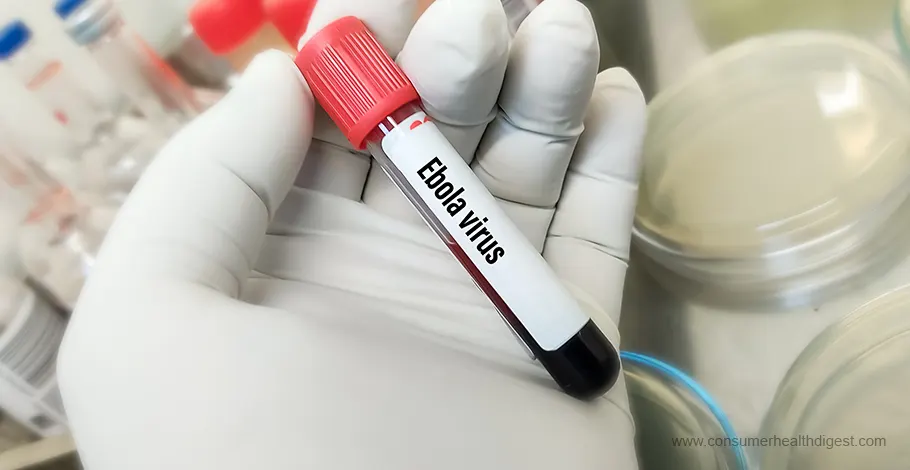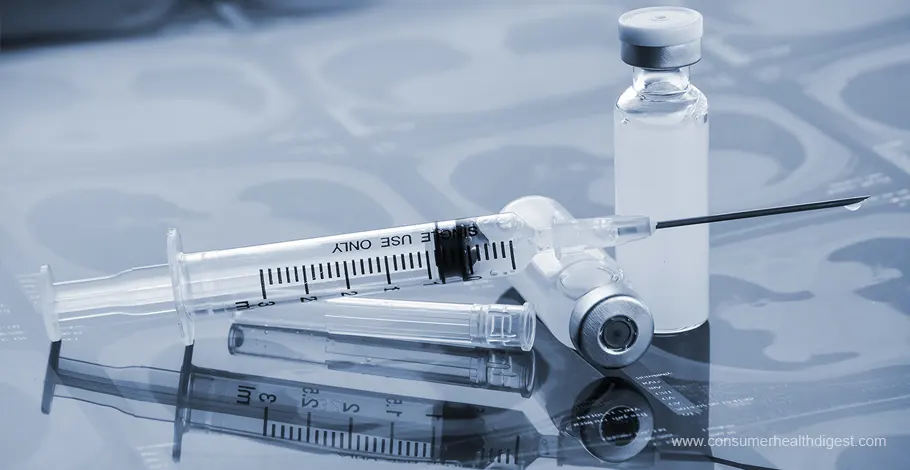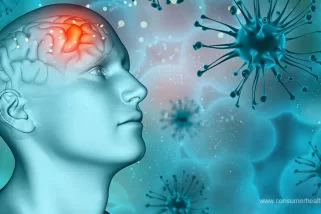Introduction
The Ebola virus, a severe and oftentimes fatal illness in humans, has challenged global health systems and researchers alike. National Institutes of Health research document seeks to provide a comprehensive overview of the Ebola viral epidemic, including its origins, transmission methods, and the global response to its outbreaks[1].

By examining the causes, symptoms, preventive strategies, and treatment options, we aim to underscore the importance of international cooperation, advanced research, and public health preparedness in combating this deadly virus.
Causes of the Ebola Viral Epidemic
Origin of the Virus
The Ebola virus disease (EVD), first identified in 1976 near the Ebola River in what is now the Democratic Republic of Congo, remains one of the world’s most virulent diseases. The virus originates from fruit bats, which are natural Ebola virus hosts.
Transmission Mechanisms
Human transmission occurs through contact with the blood, secretions, organs, or other bodily fluids of infected humans and animals. The rapid spread within communities is often facilitated by close and direct physical contact with infected individuals or the deceased.
Contributing Factors to Outbreaks
Factors contributing to the spread of Ebola outbreaks include inadequate public health infrastructures, delayed response to outbreaks, cultural practices, and dense populations that facilitate rapid transmission.
Symptoms of the Ebola Virus

Symptoms of the Ebola Virus
Early Symptoms and Their Progression
Studies on Ebola initial symptoms, starting as early as two days or as late as three weeks after contracting the virus, include fever, sore throat, muscular pain, and headaches. Without prompt treatment, these symptoms can escalate to vomiting, diarrhea, rash, and in severe cases, internal and external bleeding[2].
Long-term Health Effects
The aftermath of surviving the Ebola virus extends beyond the acute phase, with survivors potentially facing long-term health repercussions. Medical research has illuminated that post-recovery complications can include, but are not limited to, persistent joint and muscle pain, eye and vision abnormalities, and severe neurological and cognitive issues. These findings advocate for a comprehensive post-recovery care plan to address this array of long-term health effects, emphasizing the need for ongoing medical support and research into effective treatment modalities.
Statistical Analysis on Symptom Prevalence and Severity
In-depth statistical analysis of symptom prevalence and severity across various outbreaks reveals a concerning variability. Mortality rates have been observed to fluctuate significantly, ranging from 25% to 90%, contingent upon the specific Ebola virus strain and the caliber of medical care received. This data not only highlights the virulent nature of the virus but also reinforces the critical necessity for robust healthcare infrastructure capable of delivering high-quality care. Continuous research and development into Ebola treatment strategies remain imperative in enhancing survival rates and minimizing the long-term health impacts on affected populations.
Prevention Strategies, Public Health Policies, and Implications
Implementing stringent public health policies, including surveillance, contact tracing, and the quarantine of suspected cases, has proven essential in controlling outbreaks. These measures, supported by empirical data, are the backbone of an effective epidemiological response, ensuring that potential threats are swiftly identified and mitigated.
Community and Individual-level Preventive Measures
Public education campaigns focusing on hygiene practices, safe burial procedures, and symptom awareness are crucial in preventing the spread of the virus within communities. By leveraging the power of communication and information dissemination, health authorities can significantly reduce transmission rates. Such campaigns, rooted in scientific research, reinforce the importance of community and individual responsibility in safeguarding public health.
Role of International Organizations in Containment and Prevention
Organizations like the World Health Organization (WHO) and the Centers for Disease Control and Prevention (CDC) play pivotal roles in coordinating international efforts, providing resources and expertise to contain outbreaks. Their global surveillance systems and emergency response capabilities are indispensable in preventing localized epidemics from escalating into pandemics. With a foundation built on extensive research and collaboration, these organizations exemplify the importance of a unified approach to public health crises.
Treatment Options

Ebola Virus Treatment Options
Current Treatment Protocols
While there is no definitive cure for Ebola Virus Disease (EVD), supportive care—rehydration with oral or intravenous fluids—significantly improves survival rates. In the battle against this devastating virus, the medical community has been actively exploring new frontiers.
Experimental antiviral drugs and immune therapies are currently under rigorous testing by the National Institutes of Health, embodying our relentless pursuit of a solution. These treatments are not just experimental but represent the cutting edge of medical science, offering a beacon of hope in the fight against EVD[3].
Research and Development in Ebola Treatment
The thrust of continuous research and the development of vaccines are of paramount importance in our battle against Ebola. The rVSV-ZEBOV vaccine stands out as a testament to this relentless pursuit, having demonstrated high effectiveness in preventing the spread of the virus among healthcare workers and populations at high risk[4].
This vaccine is not just a medical achievement; it is a critical tool in our arsenal, providing a shield of protection to those on the front lines and those most vulnerable. The effectiveness of the rVSV-ZEBOV vaccine, backed by rigorous scientific research, underscores the importance of continued investment in vaccine development and research. In this light, the global community's commitment to supporting research initiatives and facilitating the deployment of vaccines is indispensable.
Impact of the Ebola Crisis
Social, Economic, and Health Impacts on Affected Regions
The Ebola crisis has deeply impacted affected regions, leaving a multifaceted legacy that extends well beyond the immediate health concerns. Socially, the epidemic has profoundly influenced community structures, often stigmatizing survivors and health workers, and disrupting traditional societal practices.
Economically, the crisis has been devastating, with the World Bank estimating a combined loss of $2.2 billion in GDP in Guinea, Liberia, and Sierra Leone in 2015 alone. This economic downturn has further repercussions, hindering long-term development efforts and exacerbating poverty levels.
Health-wise, the strain on already fragile healthcare systems was monumental, redirecting resources from routine health services and creating setbacks in the fight against other diseases. The aftermath of the Ebola crisis underlines the critical need for international cooperation in health emergencies, robust health systems, and economic resilience plans to mitigate future outbreaks' impacts.
Future Outlook
Advances in Vaccine Development and Distribution
The landscape of vaccine development and distribution is steering towards unprecedented advancements, promising a brighter horizon in the combat against infectious diseases like Ebola Virus Disease (EVD). With innovative research leading to the strategic global stockpiling of vaccines, we stand on the cusp of a new era in disease prevention.
Enhanced global collaboration is the linchpin in this effort, fostering shared research endeavors and coordinated response strategies that not only prepare us for future outbreaks but also fortify global health security. Despite the challenges posed by EVD, these developments are not just hopeful but pivotal, marking a significant leap forward in our collective ability to manage infectious diseases, underscoring the importance of continued vigilance, research, and investment in robust healthcare infrastructures.
Conclusion
The fight against the Ebola virus demands global solidarity, advanced research, and unwavering commitment to public health preparedness. By understanding the epidemiology of the disease, implementing effective prevention strategies, and developing innovative treatments, we can safeguard global health against this formidable adversary.
Together, through awareness, preparedness, and continued research, we can ensure a resilient response to the Ebola virus and other emerging infectious diseases.
4 Sources
We review published medical research in respected scientific journals to arrive at our conclusions about a product or health topic. This ensures the highest standard of scientific accuracy.
[2] Clinical Manifestations and Laboratory Diagnosis of Ebola Virus Infection : https://www.ncbi.nlm.nih.gov/pmc/articles/PMC7149730/
[3] Treatment of Ebola-related critical illness : https://www.ncbi.nlm.nih.gov/pmc/articles/PMC7223059/
[4] Efficacy and effectiveness of an rVSV-vectored vaccine in preventing Ebola virus disease: final results from the Guinea ring vaccination, open-label, cluster-randomised trial : https://www.ncbi.nlm.nih.gov/pmc/articles/PMC5364328/







 This article changed my life!
This article changed my life! This article was informative.
This article was informative. I have a medical question.
I have a medical question.
 This article contains incorrect information.
This article contains incorrect information. This article doesn’t have the information I’m looking for.
This article doesn’t have the information I’m looking for.